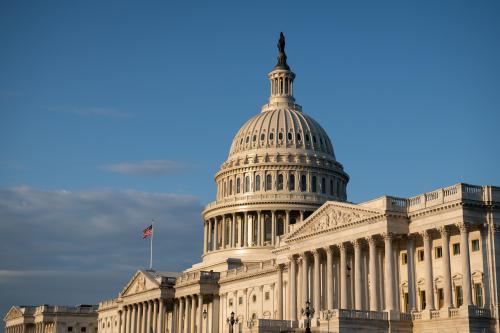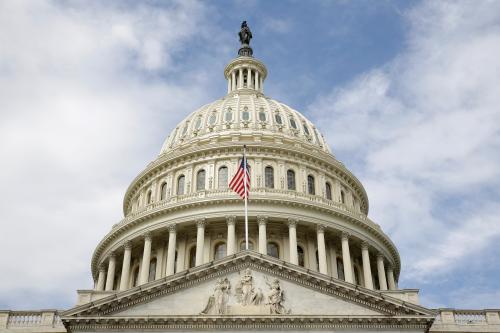On April 29, 2021, Molly Reynolds, Senior Fellow in Governance Studies at The Brookings Institution, testified before the House Committee on the Budget for a hearing entitled, “Protecting our Democracy: Reasserting Congress’ Power of the Purse.” In her remarks, Reynolds provided insight into why and how Congress requires additional tools to effectively monitor the executive branch.
Chairman Yarmuth, Ranking Member Smith, and members of the Committee, my name is Molly Reynolds [1] and I am a Senior Fellow in the Governance Studies Program at the Brookings Institution.
I appreciate the opportunity to testify today on how Congress can better fulfill its constitutional obligation to provide for, and effectively oversee, the executive branch. My research has explored a range of topics related to congressional rules and procedures, including changes in the congressional budget process since the adoption of the Congressional Budget and Impoundment Control Act. My goal today is to provide context for why and how Congress requires additional tools to effectively monitor the executive branch’s execution of congressional decisions.
In this context, I want to make four main points today.
1. The structure of the U.S. constitutional system and the incentives facing members of Congress mean that Congress needs procedures in place to ensure that that the executive branch is complying with congressional intent.
Because the Constitution separates legislative functions from executive ones, and because Congress must rely on the executive to implement its policy choices, divergence between Congress’s intent and policy outcomes is inevitable; the individuals charged with executing federal programs on a daily basis—from agency heads down to career civil servants—will always encounter situations in which the language of the law does not provide sufficient guidance.[2]
Indeed, it is because of this inevitability that Congress must design and, periodically, re-design mechanisms to monitor, as effectively as possible, the activities of the executive branch in response to congressional decisions.
It is not only this constitutional division of labor that creates the need for effective oversight mechanisms. It is also the fact that, as the branch charged with implementing policy, the executive branch has types of expertise that make it better equipped to make certain detailed decisions. As the policy problems facing the nation have become more complex and numerous, Congress has frequently found itself incapable of writing statutes that set forth all of these specific choices.
In addition, as a political matter, Congress often prefers to leave detailed decisions to the executive branch. In some cases, this is due to shared preferences between the congressional majority enacting a policy and the president charged with implementing it. But in other situations, it is because Congress prefers to leave the most politically challenging issues to another branch to resolve.
Together, these circumstances mean that Congress must design ways to monitor this inevitable potential for slippage—divergence that can and does occur regardless of whether the branches are controlled by the same political party. Even in an era of high partisan polarization, it is vital to remember that the need for monitoring and oversight tools is structural and fundamental to the constitutional system.
Continue reading the full testimony here. Watch the full video of Reynolds’s testimony (starting around the 43:00 mark) and the rest of the hearing below.
The Brookings Institution is committed to quality, independence, and impact.
We are supported by a diverse array of funders. In line with our values and policies, each Brookings publication represents the sole views of its author(s).






Commentary
TestimonyProtecting our Democracy: Reasserting Congress’ Power of the Purse
April 29, 2021